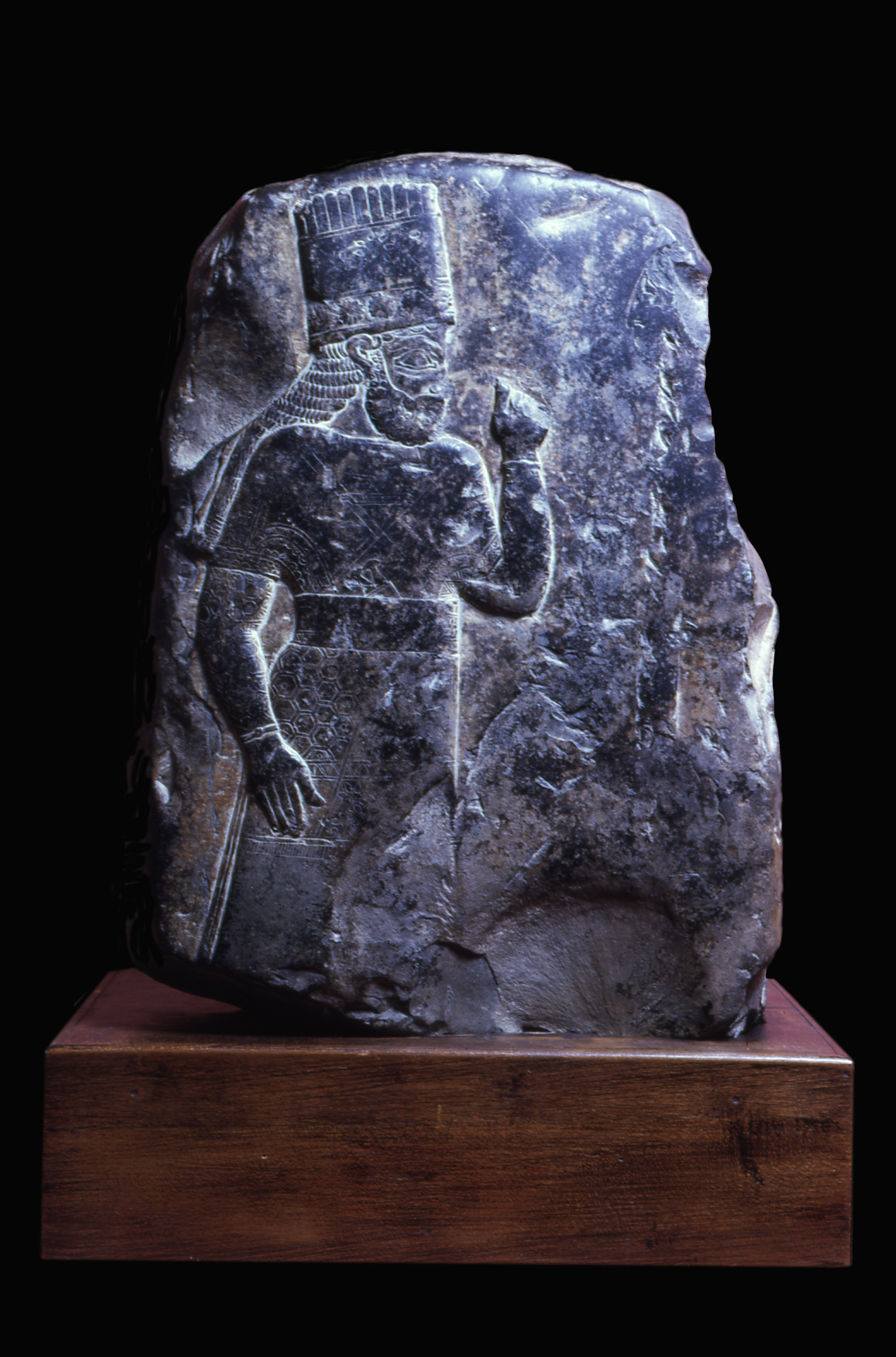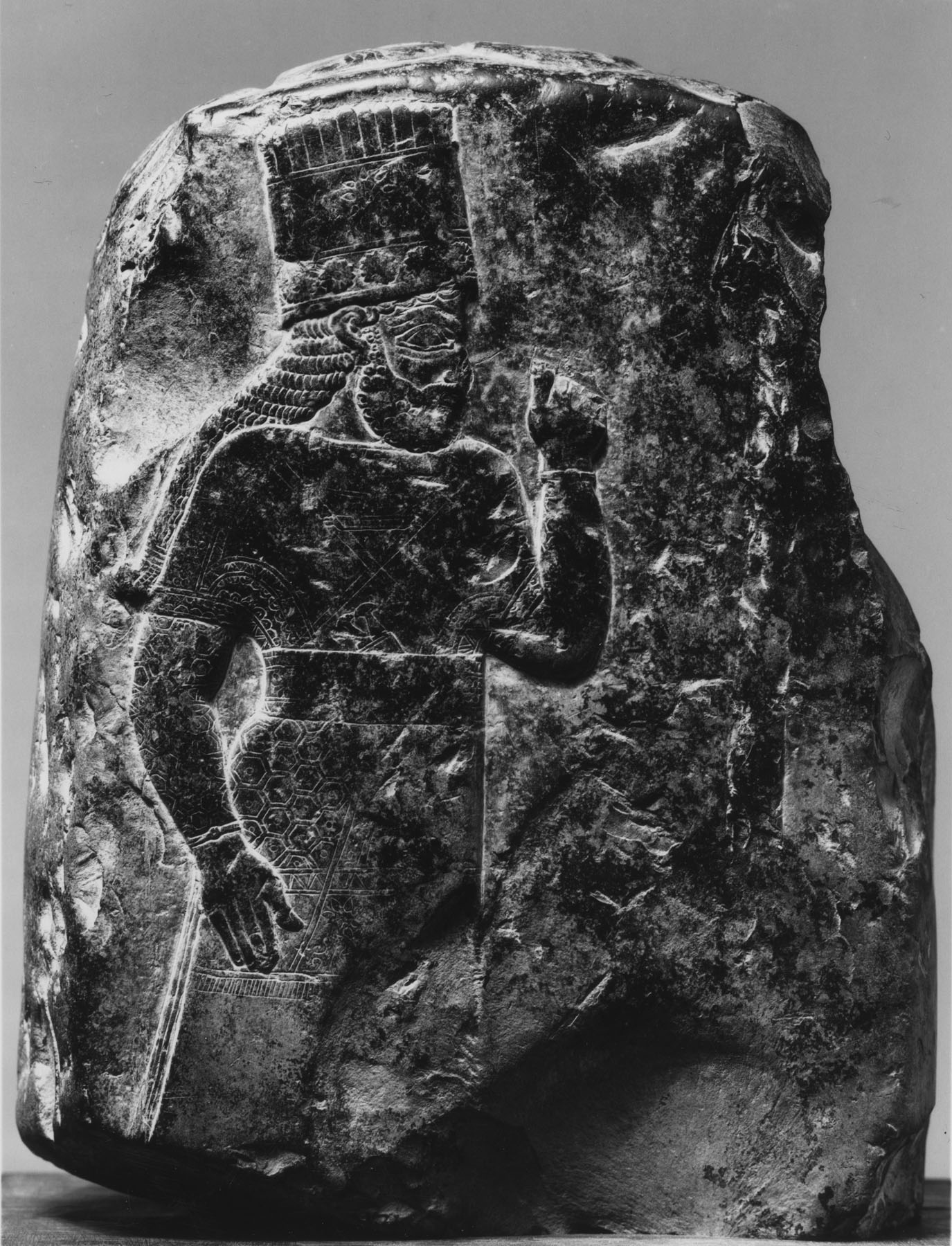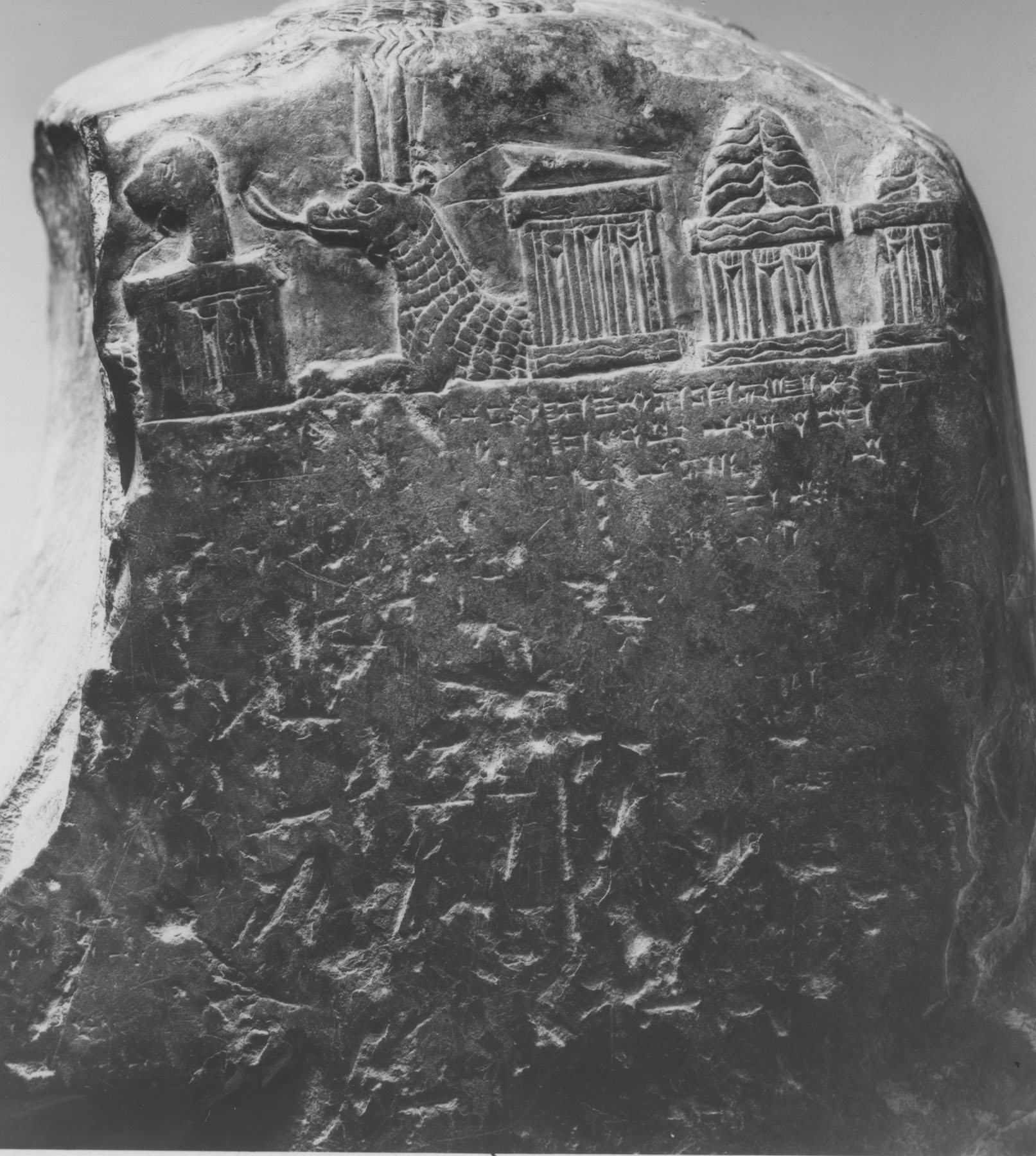Boundary Stone
(Ancient Near East )
A "kudurru," the Akkadian term for boundary stone, combines images of the king, gods, and divine symbols with a text recording royal grants of land and tax exemption to an individual. While the original was housed in the temple, a copy of the document was kept at the site of the land in question. This example was found at the temple of Esagila, the primary sanctuary of the god Marduk. The king Marduk-nadin-ahe is depicted with his left hand raised in front of his face; he wears the tall Babylonian feathered crown and an elaborately decorated garment with a honeycomb pattern. On the top are a sun disk, star, crescent moon, and scorpion, representing deities who witnessed the land grant and tax exemption. A snake-dragon deity emerges from a row of altars shaped like temple façades along the back.
Inscription
Provenance
Provenance (from the French provenir, 'to come from/forth') is the chronology of the ownership, custody, or location of a historical object. Learn more about provenance at the Walters.
[Excavated by German expedition at Babylon, 1900]. Dikran Kelekian, Paris and New York, [date and mode of acquisition unknown]; Henry Walters, Baltimore, 1922, by purchase; Walters Art Museum, 1931, by bequest.
Exhibitions
| 1984 | The Taste of Maryland: Art Collecting in Maryland 1800-1934. The Walters Art Gallery, Baltimore. |
| 1964 | Thou Shalt Have No Other Gods Before Me. The Jewish Museum, New York. |
Conservation
| Date | Description | Narrative |
|---|---|---|
| 2/12/1964 | Examination | examined for exhibition |
Measurements
11 x 8 1/4 x 4 1/4 in. (28 x 21 x 10.8 cm)
Credit Line
Acquired by Henry Walters, 1922
Location in Museum
Accession Number
In libraries, galleries, museums, and archives, an accession number is a unique identifier assigned to each object in the collection.
In libraries, galleries, museums, and archives, an accession number is a unique identifier assigned to each object in the collection.
21.10








